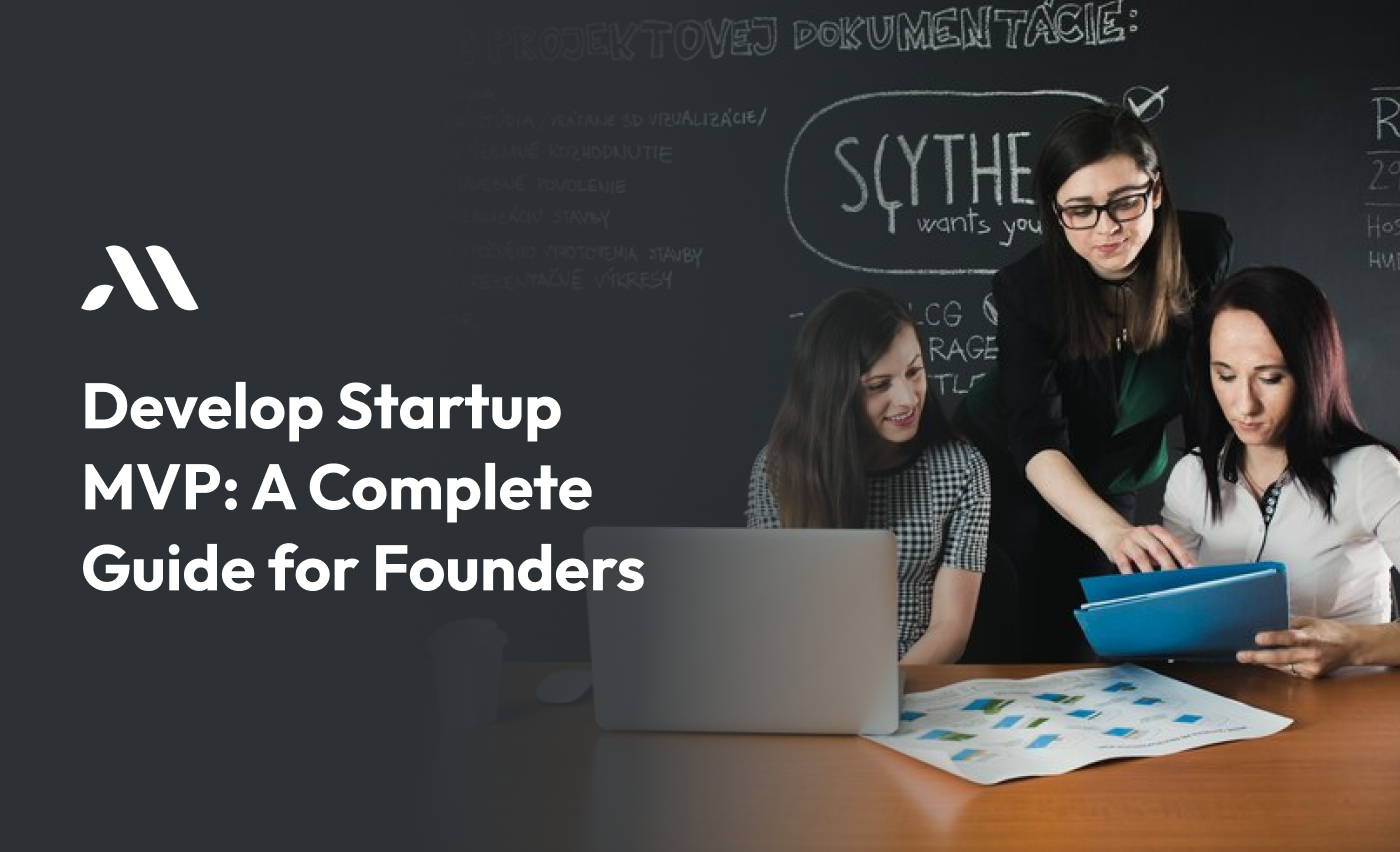Starting a new business is an exciting journey, but it comes with its own set of challenges. One of the most important steps in this journey is creating a Startup MVP (Minimum Viable Product). An MVP is a simplified version of your product that allows you to test your idea in the market without investing too much time or money. This guide will help startup owners understand what an MVP is, why it’s important, and how to develop one effectively.
What is a Startup MVP?
A Startup MVP is the first version of your product that includes only the most essential features. The goal is to build something that solves a core problem for your target audience, allowing you to test the market and gather feedback. By focusing on just the necessary features, you can launch your product quickly and start learning from real users.
Note: An MVP is not a final product. It's a stepping stone that helps you learn and improve before committing to full-scale development.
Why is MVP Development Important for Startups?
MVP Development for Startups is crucial because it helps you validate your business idea without spending too much time and resources. Here are some key reasons why developing an MVP is important:
- Risk Reduction: By launching an MVP, you can test whether your idea has potential in the market. This reduces the risk of failure.
- Cost Efficiency: Developing a full product can be expensive. An MVP allows you to test your concept without spending too much money.
- User Feedback: Real users can provide valuable feedback on your MVP. This feedback helps you improve the product before a full launch.
- Investor Attraction: Investors are more likely to fund a startup that has a tested product in the market. An MVP shows that you’re serious and have proof of concept.
How to Develop a Startup MVP
Creating a Startup MVP involves several steps. Here’s a complete guide to help you develop an MVP effectively:
1. Identify the Problem
Before you start building your MVP, you need to clearly define the problem you’re trying to solve. Understanding the problem is the first step to creating a solution that your target audience will find valuable.
Tip: Talk to potential customers to understand their pain points. This will help you build a product that meets their needs.
2. Define Your Core Features
Once you’ve identified the problem, the next step is to define the core features of your MVP. These are the must-have features that solve the main problem for your users. Remember, an MVP should be simple and focus only on what’s essential.
Remember: Less is more when it comes to an MVP. Focus on delivering value with the fewest features possible.
3. Choose the Right Technology
Choosing the right technology is crucial for your MVP Development for Startups. The technology you choose should allow you to build and launch your MVP quickly. It should also be scalable so that you can add more features later.
"The right technology can make or break your MVP. Choose wisely to ensure your startup’s success."
4. Build a Prototype
Before developing the MVP, it’s a good idea to create a prototype. A prototype is a simple version of your product that shows how it will work. This helps you visualize the product and make necessary changes before development.
Note: A prototype is not the same as an MVP. It’s a mockup that helps you plan the development process.
5. Develop the MVP
Once you have a clear plan and a prototype, it’s time to start developing your Startup MVP. Work with a team of developers to build the core features you’ve identified. Make sure to focus on quality and user experience.
According to a study by CB Insights, 42% of startups fail because there is no market need for their product. Developing an MVP helps you avoid this pitfall by testing the market early on.
6. Launch and Test
After development, it’s time to launch your MVP. Share it with a small group of users and gather feedback. This feedback is invaluable as it helps you understand what works and what needs improvement.
Tip: Use tools like surveys and analytics to gather data on how users interact with your MVP. This data will guide your next steps.
7. Iterate and Improve
Based on the feedback you receive, make necessary improvements to your MVP. This could involve adding new features, fixing bugs, or improving the user experience. Remember, the goal is to create a product that meets the needs of your users.
Remember: MVP development is an ongoing process. Keep iterating and improving until you’re ready to launch the full product.
Working with an MVP Development Company
If you’re not sure how to develop an MVP on your own, consider working with an MVP Development Company. These companies specialize in creating MVPs for startups and can help you bring your idea to life quickly and efficiently.
Benefits of Working with an MVP Development Company:
- Expertise: MVP development companies have experience in building MVPs and can guide you through the process.
- Speed: With a dedicated team, you can develop and launch your MVP faster.
- Quality: These companies focus on delivering high-quality products that meet user needs.
"A great MVP can be the difference between success and failure for a startup. Working with experts can give you the edge you need."
Common Mistakes to Avoid in MVP Development
While developing an MVP, it’s important to avoid common mistakes that can derail your progress. Here are some pitfalls to watch out for:
- Overcomplicating the MVP: Remember, an MVP should be simple. Adding too many features can delay your launch and increase costs.
- Ignoring User Feedback: User feedback is crucial for improving your MVP. Make sure to listen to your users and make necessary changes.
- Skipping the Prototype: A prototype helps you plan the development process. Skipping this step can lead to costly mistakes later on.
- Not Testing Enough: Testing is essential for ensuring that your MVP works as intended. Don’t rush the testing phase.
Note: Avoiding these mistakes can save you time and money in the long run.
Also Read - Trending MVP Features for the Retail Sector
The Future of Your Startup MVP
Once you’ve successfully launched your Startup MVP and gathered feedback, it’s time to think about the future. Your MVP is just the beginning. Use the insights you’ve gained to develop a full product that meets the needs of your users.
Remember: The journey doesn’t end with an MVP. It’s the foundation for building a successful startup.
Conclusion
Developing a Startup MVP is a critical step in the journey of any startup. It allows you to test your idea, gather feedback, and make improvements before launching a full product. By following this guide, you can develop an MVP that sets the stage for your startup’s success.
Whether you’re working on your own or with an MVP Development Company, remember to keep things simple, focus on the core features, and always listen to your users. With the right approach, your MVP can be the key to building a successful startup.
Ready to bring your startup idea to life? MicraSol, your trusted app development partner, can help you build the perfect MVP. Start small, test your idea, and grow big with our expert team by your side. Let’s turn your vision into reality contact MicraSol today!
Tip: Start small, learn fast, and grow big. Your MVP is the first step in a journey of continuous learning and improvement.
FAQS
What is a Startup MVP?
A Startup MVP (Minimum Viable Product) is the first version of your product that includes only the most important features. It’s a simple version that helps you test your idea in the market without spending too much time or money.
Why do I need a Startup MVP?
You need a Startup MVP to test if your business idea works in the real world. It helps you gather feedback from users, reduce risks, and save money before you develop the full product.
How do I choose the right features for my MVP?
To choose the right features for your Startup MVP, focus on solving the main problem your product is designed for. Pick the features that are most important to your target audience and leave out anything extra.
How much does it cost to develop a Startup MVP?
The cost of developing a Startup MVP depends on the complexity of the features and the technology you use. It’s usually less expensive than building a full product because you’re focusing on the essentials.
How long does it take to develop an MVP?
Developing a Startup MVP can take anywhere from a few weeks to a few months, depending on the size of the project and the team involved. The goal is to build and launch it quickly so you can start gathering feedback.








